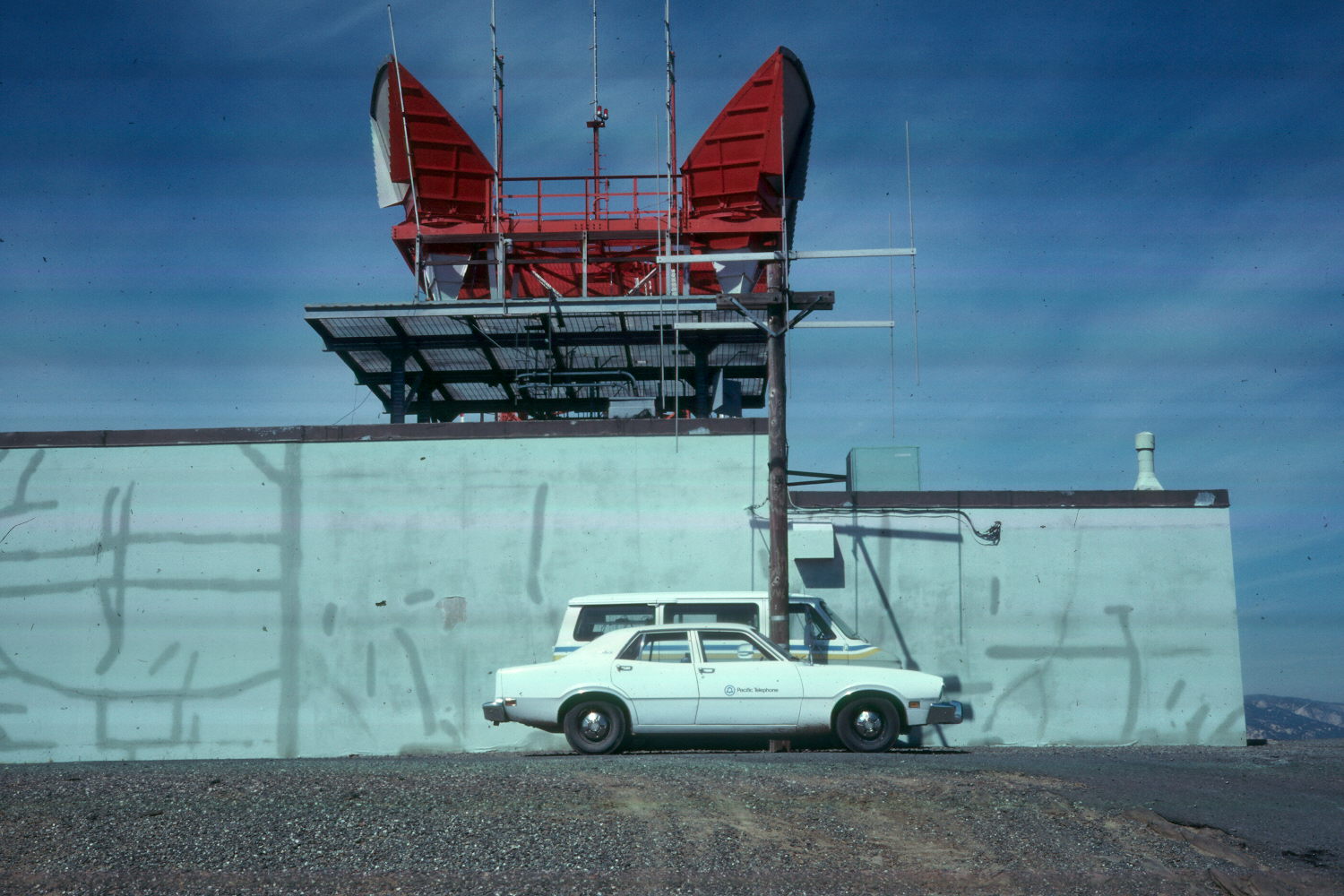
|
NORTHERN CALIFORNIA MICROWAVE SITES FROM THE LATE 1970s |
I would like to tremendously thank "Floyd", for taking the time and effort to scan old slides he had taken of sites he visited in the late 1970's. Floyd started with Pacific Telephone and Telegraph in the East Bay area of San Francisco in switch maintenance. When he started out there were still several large city manual offices, (Berkeley, Oakland). He worked on mostly the No. 1 XBar, but spent some time in the panel offices, did PBX repair and worked on all sorts of equipment. He retired working for Long Lines in 1983, just before divestiture.

VACA HILL AUGUST 1978
From Floyd, a short history:
I spent the last 20 years of my telephone service in the Sacramento area in the Toll maintenance side of the business. Sacramento was an interesting toll center; it was not the largest center in the system but was at the center of the long distance business from the outset. In the early days open wire facilities came over the Sierra around the Donner Pass area and into Sacramento and then off to the San Francisco area. When the transcontinental cables reached California, it was routed over the same "open-wire" route, and the first microwave route, followed the same, which coincidentally was the same routing of the transcontinental railroad and now Interstate 80.
The northern California area carrier systems grew at a rapid pace form the 1950s on. In 1960 there was still C type open wire carrier from Sacramento to Angels Camp and open wire serving the rural community of Michigan Bar (a Northelectric CX 60). L1 Coax went from Sacramento to Redding then on to the Northwest. TD and TH microwave systems were routed in all directions out of Sacramento. To the south through Elk Grove, then to Lodi. To the southeast to Jackson and the "East Valley" route. The west to Vaca Hill, and Mt Vaca which was later realigned to Barryessa Peak. North to High Plateau. Many short haul microwave systems served the most remote cites in northern California. Sacramento had a leg off of the Oakland-Boston L4 Coax system; D8unnigan which is a short distance from Sacramento. The L4 came into California at a place in the northeastern desert called Viewland; then to another site east of Red Bluff, both underground power points. Then to Dunnigan and from there the cable went south to Oakland. Around 1980 a FO was routed south from Sacramento through Lodi and south to join the route out of the Bay Area to Los Angeles.
The Sacramento Main Central Office, like most other big city office's grew with the years. From the early manual boards to a good sized SXS switch, #5 XBar, ESS, all types of LD Boards, Information Boards, etc and eventually TSPS. Long Distance service was handled by a Toll XBar tandem, a 4A (one of the regional centers), 4ESS and a 4W5 XBar serving the State of California ATSS network. There was a Program Board, from the radio days and a good sized Private Line board, telegraph board, and lots of N, ON, ON/K, T Carrier systems and a SCOTS alarm center. The complex covered a city block and consisted of basically three buildings with several additions, an 8 story structure, a "Tower" ad an 11 story building eventually becoming the AT&T building.
 Lodi ESS October 1978
Lodi ESS October 1978
 Lodi Test Board October 1978
Lodi Test Board October 1978
NORTHERN CALIFORNIA MICROWAVE SITES
Northern California Microwave sites 1978
NORTHERN CALIFORNIA K-STATIONS
Northern California K Carrier Stations
ECHO SUMMIT MICROWAVE STATION and TRAM RESCUE TRAINING
Northern California Echo Summit
NORTHERN CALIFORNIA SHORT-HAUL
Northern California Short Haul Stations
Return to California Microwave Sites Telephone Central Offices